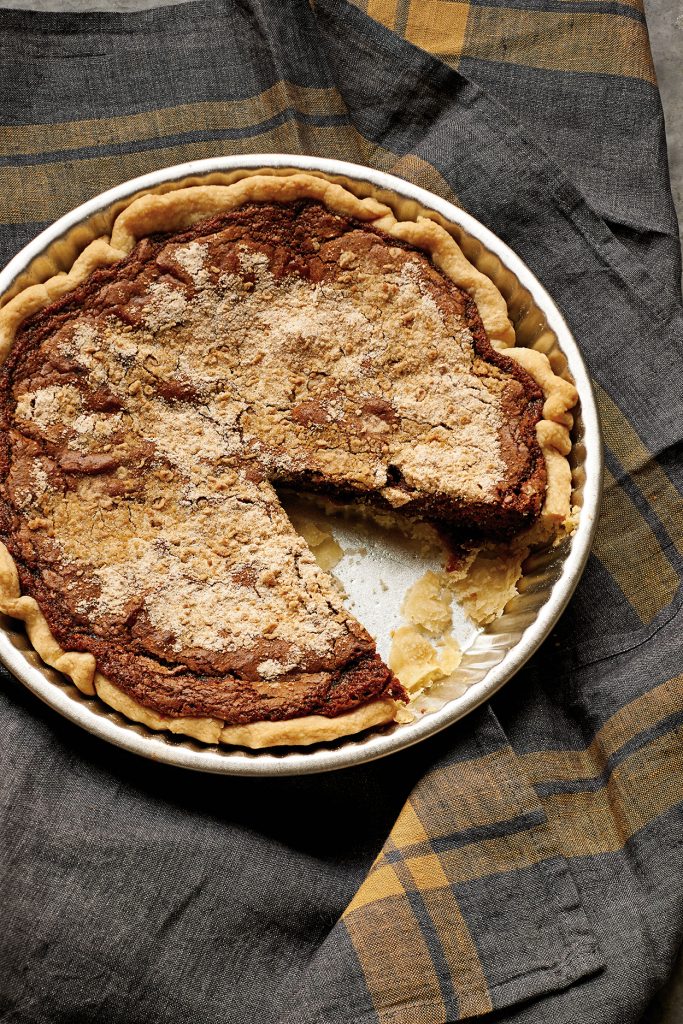This cake is excerpted from American Cake, a beautiful new book by Nashvillian Anne Byrn, (aka The Cake Mix Doctor).


Placing food in pie pastry is a centuries-old tradition that allows you to eat with your hands and take food with you. The Pennsylvania Dutch placed molasses crumb cake in a piecrust and called it Shoofly Pie in the 1880s. With the spongy texture of cake and the crust of pie, this dessert is the most beloved of the Southeastern Pennsylvania region where it was born. According to historian William Woys Weaver, Shoofly Pie began as Centennial Cake in 1876, baked in a pan without a crust. The crust was later added so people could eat the cake with their hands over their morning coffee. Weaver says the name “Shoofly” comes from Shoofly the Boxing Mule, a popular circus animal at the time, and the Shoofly name was branded onto foods like Shoofly molasses, a key ingredient in this dessert. The combination of molasses, coffee, and spices in the batter bakes into an almost chocolate-like taste, and this pie/cake is incredibly delicious warm with coffee or tea. This recipe is adapted slightly from Weaver’s book As American as Shoofly Pie: The Foodlore and Fakelore of Pennsylvania Dutch Cuisine.
1. Place a rack in the center of the oven, and preheat the oven to 350F. Place the piecrust in a 10″ metal pie pan. Crimp the edges, and place the pan in the refrigerator to stay chilled.
2. Place the flour, sugars, cinnamon, nutmeg, baking powder, and salt in the bowl of a food processor or place in a large mixing bowl. Pulse or stir until well combined. Cut the butter into 12 pieces and distribute around the bowl. Pulse or cut in with 2 sharp knives or a pastry blender until the mixture is crumbly. Reserve 1⁄4 cup of the crumbs and set aside.
3. In a large mixing bowl, stir together the coffee and molasses until combined. Stir in the baking soda. Add the dry ingredients and stir until smooth. Or, if using a food processor, pour the molasses mixture into the food processor with the dry ingredients and pulse until smooth. Remove the pie pan from the refrigerator and pour in the batter. Scatter the reserved crumbs over the top. Place the pan in the oven.
4. Bake until the center is set when lightly pressed with a finger, 40 to 45 minutes. Remove the pan from the oven, and let it rest for 15 minutes. Slice and serve warm.
share this: